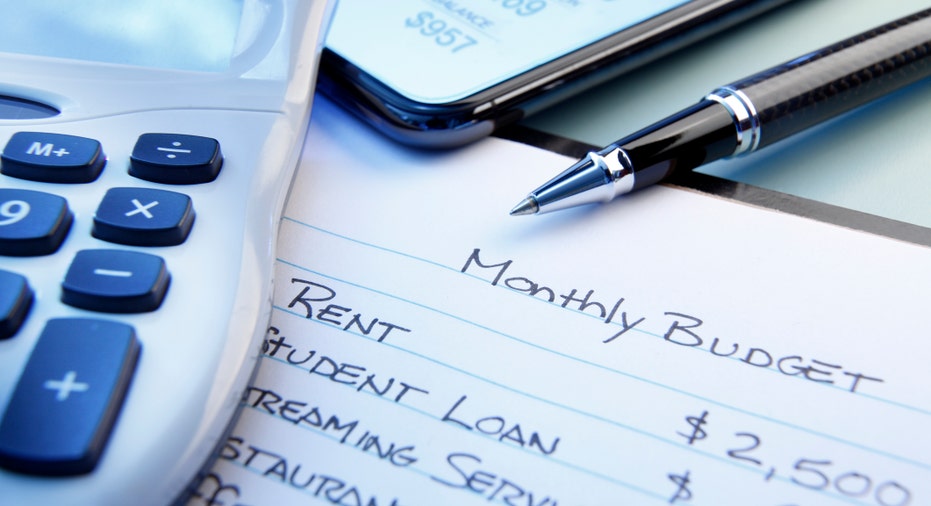Second stimulus checks are arriving — here's how to prepare

For many, debt may not be a top priority with the upcoming stimulus package, but here’s what to consider if it is for you. (iStock)
Second stimulus check are rolling out to qualified Americans as part of a $900 billion coronavirus relief package passed by Congress in late December. While the bill offered up to $600 -- half of the $1,200 given out at the start of the pandemic in March 2020 -- President-elect Joe Biden and other Democrats have called for further stimulus payments of up to $2,000.
“One of the first things that I want to do when our new senators are seated is deliver the $2,000 checks to the American families,” Senate Minority Leader Chuck Schumer, who will become majority leader, told reporters after Democratic challengers Jon Ossoff and Raphael Warnock swept the Senate run-off elections in Georgia.
Sending additional checks to help struggling Americans is likely to be an early focus of the new administration and a subject of major debate as it will have to pass the new 50-50 split in the Senate.
If you need to pay down credit card debt you’ve accumulated during the pandemic, here are some steps you can take in the meantime.
1. Review your debt
Before you do anything else, it’s important to get a clear idea of what you’re dealing with. List out each of your debt accounts on paper or in a spreadsheet, including the balance, interest rate and monthly payment for each. If you’re behind on payments, add that to your list as well.
This exercise will help you understand how you should prioritize your efforts when you’re financially able to do so. It’s also a good practice for general personal finance after the pandemic ends.
Seeing everything laid out will also help keep you motivated to stay focused on eliminating your debts.
HOW DEBT RELIEF PROGRAMS CAN HELP PAY OFF YOUR LOANS
2. Look into debt consolidation options
For most people, the stimulus check will likely go toward immediate needs, such as rent, groceries and utilities. As a result, there’s a high likelihood for many that direct stimulus payments won’t go toward paying down debt at all.
In this scenario, it may be better to look for opportunities to restructure your debt through consolidation to make it more manageable and possibly even more affordable.
With a personal loan, for instance, you may be able to get a lower interest rate than what you’re paying on your credit cards. You may even qualify for a balance transfer credit card, which can give you an introductory 0% APR for several months.
Just keep in mind that you’ll typically need a good credit score to get a low-interest personal loan or a balance transfer card. If you qualify, though, it can be a good way to tackle your debt without necessarily making extra payments.
If you’re considering debt consolidation, visit a marketplace like Credible to explore personal loan interest rates and compare balance transfer credit cards. You can also use Credible’s personal loan calculator to get an idea of how much you can expect to pay every month and the related interest charges.
THIS IS HOW DEBT CONSOLIDATION HELPS EXPEDITE YOUR PAYOFF GOALS
3. Grow your cash flow
If you’ve lost your job or business or had hours cut due to the pandemic, any money you can earn will likely go toward your immediate expenses. But if you’ve been fortunate enough to still have a regular job, look for opportunities to make some extra cash that you can put toward your monthly debt payments.
For example, look for ways you can monetize your marketable skills. You may also consider joining a delivery service like Uber Eats, DoorDash or Instacart, which allows you to make money on your own schedule.
Take some time to think about skills you could monetize, and also look for opportunities in your area to earn money in other ways. If you have credit card rewards sitting around in your online accounts, consider using them to help pay for some of your purchases, making space in your budget for more debt payments.
As a long-term play, also consider opening a high-yield savings account. While it won’t make much of a difference for your current situation, it’ll give you the chance to earn more on the savings you’ll be able to build over time as the economic situation improves.
Consumers can check out high-yield savings options via Credible’s marketplace to save extra cash.
WHY YOU SHOULD PUT MONEY IN A HIGH-YIELD SAVINGS ACCOUNT
The bottom line
The coronavirus pandemic has squeezed tens of millions of consumers financially, making it difficult for many to keep up with monthly debt payments, let alone their necessary expenses. If your situation is dire, continue to work with your creditors to get some relief and use your upcoming stimulus check to cover your immediate needs.
But if you’re in a position where your personal finances are in good enough shape that you can focus on your debt, consider these steps to help you pay down your balances quickly and more efficiently.
